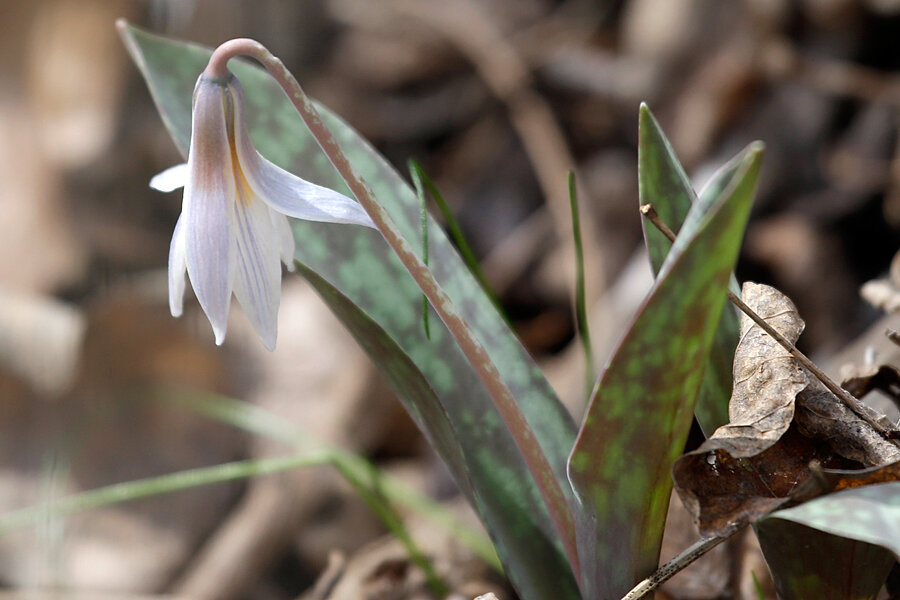How wildflower study shows complex effects from global warming
Loading...
During the past 39 years, global warming has added more than a month to the wildflower season in the southern Colorado Rockies, according to a new study tracking the local effects of global warming on plant life there.
It may be good news for hikers and wildflower enthusiasts to have meadows sprinkled with glacier lilies, mountain bluebells, and yarrow for more-extended periods. But it's a new regime that is likely to radically alter the plant communities themselves, as well as the creatures that support them or rely on them for food, researchers suggest.
More broadly, the study highlights a need to carefully track changes throughout a growing season to draw a more complete picture of warming's effect on ecosystems, the researchers involved say.
Many previous studies have been based on the first seasonal appearances of animals or of plant features – the first robin, the first nest built, or a plant's first flowering – because that was all the information that was contained in some of the longest-running observations that scientists have made of plant and animal activities during the year, notes Jake Weltzin, an ecologist with the US Geological Survey in Tucson, Ariz., who was not involved in the study.
Indeed, these earlier studies have given the first glimpses of the effect climate change is having on biological events, says Paul CaraDonna, a graduate student at the University of Arizona in Tucson and the lead author of the new study, which appears in the current issue of the Proceedings of the National Academy of Sciences.
"By and large, the timing of phenological events for a huge range of organisms is getting earlier," Mr. CaraDonna says. "As you ramp up the temperature, things start happening earlier in the season."
But that presents only part of the picture.
By "thinking about the entire season, we start to get a better fingerprint of the impacts of climate change and variation on communities," says Dr. Weltzin, who is executive director of the USA National Phenology Network, an organization that enlists people throughout the country as observers to provide regular observations of plant and animal activity.
This is what three researchers from the University of Arizona and the University of Maryland did for the new study.
They drew on a 39-year record of flowering plants in plots at the Rocky Mountain Biological Laboratory outside Crested Butte, Colo. The records were started and have been maintained by University of Maryland researcher David Inouye, a member of the research team. The records contain more than 2 million flower counts covering 121 plant species. The counts were conducted virtually every other day throughout the growing season each year.
The team recorded dates for first flowering, peak flowering, and last flowering for 60 of the most common species.
During the 39-year period, the growing season warmed about 1.2 degrees C (2.2 degrees F.). Spring snowmelt came earlier – some 11 days earlier by the end of the period.
As previous studies had done, this new study documents earlier first flowering in response to the earlier start to the growing season. By the end of the study period, first flowering had advanced by 13 days, averaged across all species. In addition, peak flowering occurred nearly 10 days earlier. And last flowering came six days later.
In absolute terms, the team found that the flowering season had grown by 35 days.
"What really jumped out at us was the total amount of change in the flowering season," says Amy Iler, a postdoctoral researcher at the University of Maryland and a member of the research team. "We were really surprised that it was that big."
When the team dug below the averages, they uncovered a wide range of responses among species. For instance, despite the longer season, only 27 percent of species experienced a change in the length of time they were in bloom. Of all the species that saw significant changes to their flowering times, only 17 percent shifted their flowering checkpoints at the same pace. Some 27 percent of the species they analyzed showed big changes to peak and last flowering, but no change in the timing of first flowering.
The mishmash of responses highlights the difficulty of trying to predict a plant community's response to global warming based on first flowering, the team holds.
Based on its results, the team concluded that current modeling estimates of the impact of global warming on plants based only on the timing of first flowering overestimate the magnitude of changes in timing of peak and last flowering. First flowering also fails to predict when last flowering will occur. And using first flowering as the sole benchmark for change underestimates the number of species affected.
Armed with this analysis, the team aims to uncover the effects these changes are having on the species that rely on these plants, CaraDonna says.








